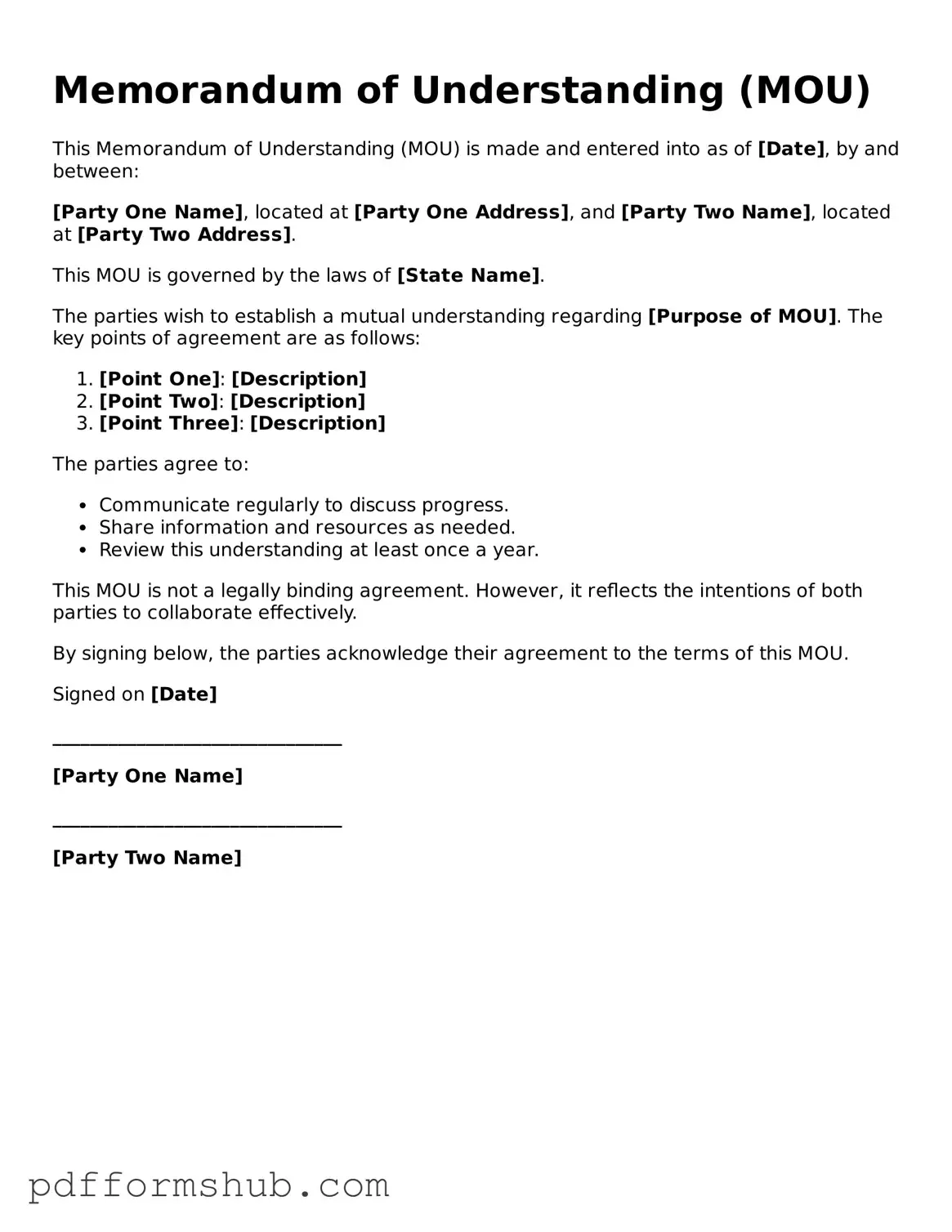In the realm of collaborative agreements, the Memorandum of Understanding (MOU) serves as a vital tool for parties seeking to outline their intentions and establish a framework for cooperation. This document typically highlights the objectives and goals that the involved parties aim to achieve together, creating a clear understanding of mutual expectations. An MOU is often less formal than a contract, yet it carries significant weight in documenting the preliminary agreements before formalizing them into legally binding contracts. Key components usually include the scope of collaboration, roles and responsibilities of each party, timelines for the completion of tasks, and mechanisms for resolving disputes. Additionally, an MOU may address confidentiality and the handling of proprietary information, ensuring that sensitive data is protected throughout the partnership. By delineating these aspects, the MOU not only fosters transparency but also enhances the likelihood of a successful collaboration, paving the way for future agreements and shared accomplishments.
